Prolog 🦉 | Basic Syntax
1. Run Prolog
- file name:
test.pl - go to the location of the
test.plin terminal - input
swipl - input
[test].(remember '.') - do sth
- if you want to halt the file, input
halt
2. Facts
- comment: type '%':
% This is the syntax for comments - facts
- fact:
pred(arg1, arg2, ..., argn). - arg: integer, atom, string begin with lower letter etc
- variable: item begin with '_' or UPPER LETTER, structure etc
- e.g.
- fact:
3. Simple Query
-
?-: the prompt for the interpreter -
query: type
pred(something) -
query principle inside
- prolog will match user's target to find the answer; when input
;, it will redo (release the variable first and start the search from the last token) - prolog's target has four ports to control the processes
- call: find the clause
- exit: target matched successfully, mark the success clause, and bind the variable
- redo: release the variable first and start the search from the last token
- fail: can not find more success clause
- prolog will match user's target to find the answer; when input
-
debug: input
debug -
trace: input
trace
4. Hybrid Query
-
hybrid query: input more query like:
-
some interval predicate
write(1 arg): print some stringnl: print an entertab(1 arg: n): print n\space
5. Rules
-
rule:
head :- body,headis predicate,:-means "if",bodyis target- e.g.
-
append more rules: we can append more rules to define a predicate
- e.g.
-
rules basic principle: in fact rules are multiple layers of query. we can see the trace of last instance:
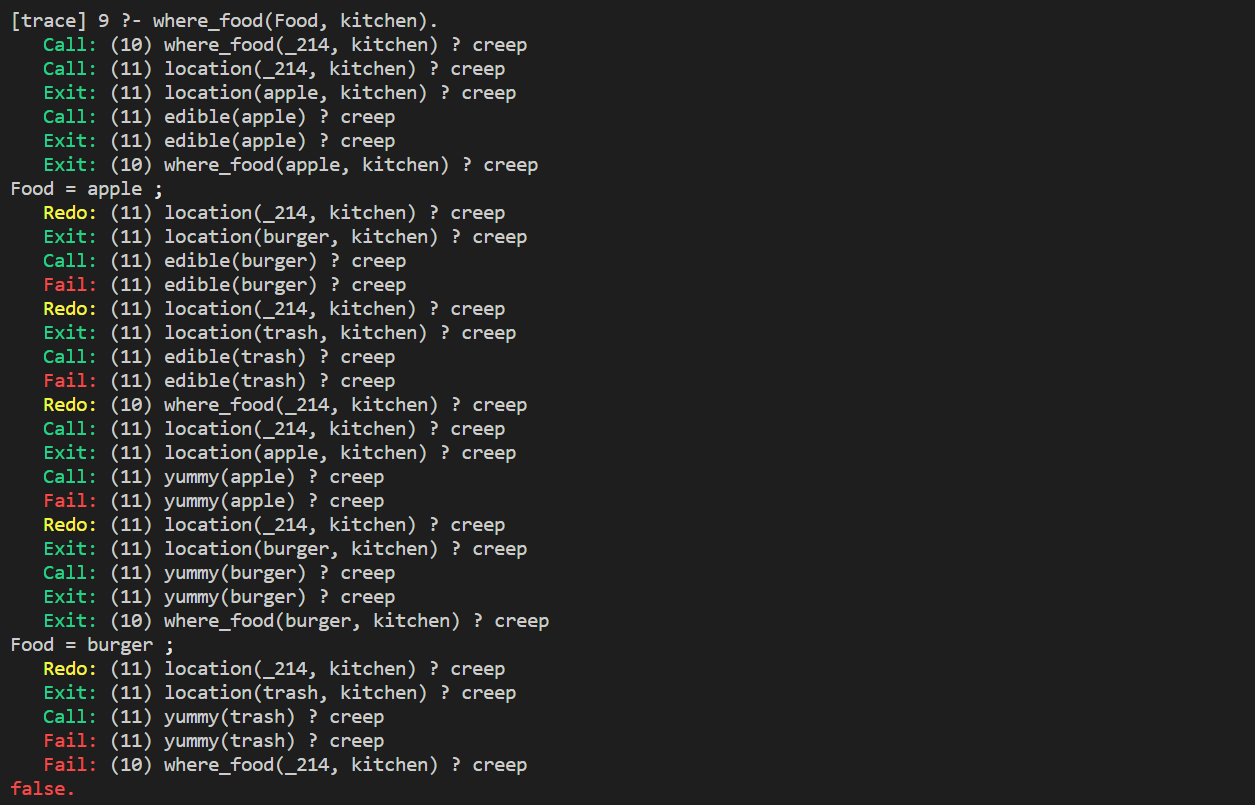
6. Arithmetic
7. Data Management
-
asserta&assertasserta(X): it will append X to the beginning of the dynamic databaseassert(X): it will append X to the end of the dynamic databasedynamic pred/arg_size: if you want to useasserta&assert, please typedynamic pred/arg_sizeto run at the front of the program, which allowspredcan be modified dynamically
- e.g.
-
retract(X): removeXfrom dynamic database(rememberdynamic)
-
use in rules
8. Recursion
-
recursion:
-
Which is faster?
is_contained_in(T1,T2):- location(X,T2), is_contained_in(T1,X).is_contained_in(T1,T2):- location(T1,X), is_contained_in(X,T2).
- if we ask
is_contained_in(X, desk),1.is faster!
9. Unification
-
unification
- variable & any items
- original item & original item(atom or integer): when they equal
- structure & structure: when each corresponding parameter of two structures can be associated
-
= (arg1, arg2)orarg1 = arg2 -
difference between unification and math expression: unification will not compute, but
iswill do
10. Data Structure
11. List
-
List:
[obj1, obj2, ...] -
empty list:
[]ornil -
head and tail
-
member(obj, list) -
append(list1, list2, dest) -
findall(result, target, result_list): find all elements intargetmode and store them inresult_listinresultmode
12. Operator
-
operator
- infix:
3 + 10 - prefix:
-13 - postfix:
8 factorial
- infix:
-
operator precedence
fix nametrait Infix xfxnon-associative Infix xfyright to left Infix yfxleft to right Prefix fxnon-associative Prefix fyleft to right Postfix xfnon-associative Postfix yfright to left -
:operator
13. Cut
-
cut
!: add!in the rule will cut the search -
!suppresses the traceback of the left target, while the target to its right is unaffected -
notbasic principle
14. Process Control
-
repeat: always succeed, provide an infinite number of choice points -
how to create a endless loop:
-
loop: read in a simple command and echoed on the screen until the user enters
end -
Tail Recursion
- Tail Resursion: using recursion to repeat; its form is a recursive statement at the end of the function, and the computation of each layer does not need to use the return information of the next layer so that a good Prolog interpreter does not need to rely on a stack
- e.g.
factorial(number, 1, answer)->answer := number!

15. Natural Language
-
And Proof: first find out all the possible breakdown of a sentence, then test whether each part of breakdown is legal
-
Diff Table: including two tables: full table and remainder table, which can be used as two arguments of the predicate; we use
-to connect two tables to make it easier to read, in the form ofX - Y -
Definite Clause Grammar -- DCG
- DCG: Diff tables are often used in Prolog, so many Prolog versions have good support for diff tables. This syntax is called DCG, and it looks very similar to a normal Prolog clause, except that
:-is replaced by-->, which is translated by Prolog into the normal difference table pred --> arg=pred([arg|X], X)- using DCG, the first part of the last instance can be:
- DCG: Diff tables are often used in Prolog, so many Prolog versions have good support for diff tables. This syntax is called DCG, and it looks very similar to a normal Prolog clause, except that
__EOF__
本文链接:https://www.cnblogs.com/RadiumGalaxy/p/17231404.html
关于博主:评论和私信会在第一时间回复。或者直接私信我。
版权声明:本博客所有文章除特别声明外,均采用 BY-NC-SA 许可协议。转载请注明出处!
声援博主:如果您觉得文章对您有帮助,可以点击文章右下角【推荐】一下。您的鼓励是博主的最大动力!

 Prolog Basic Syntax including facts, rules, queries etc
Prolog Basic Syntax including facts, rules, queries etc
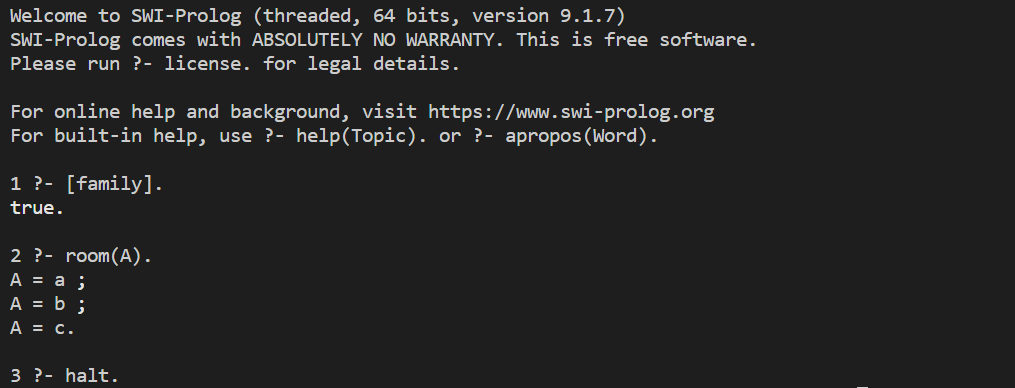
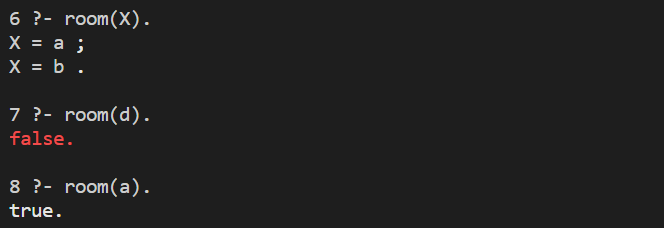
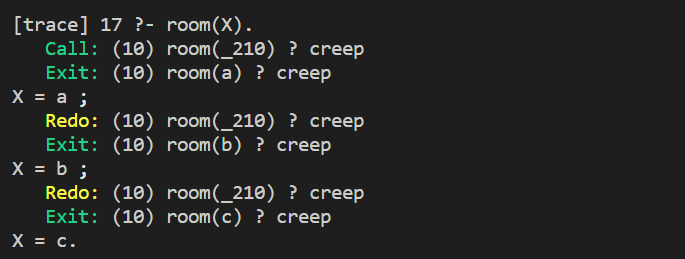


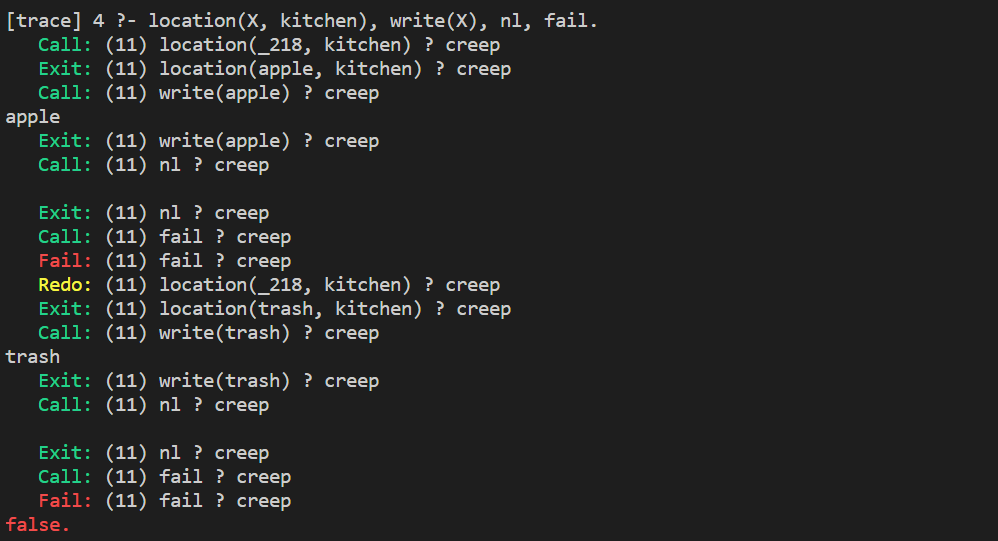





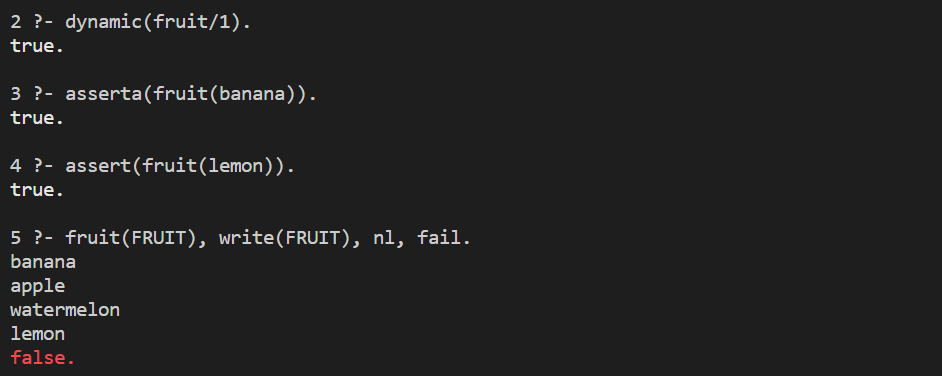
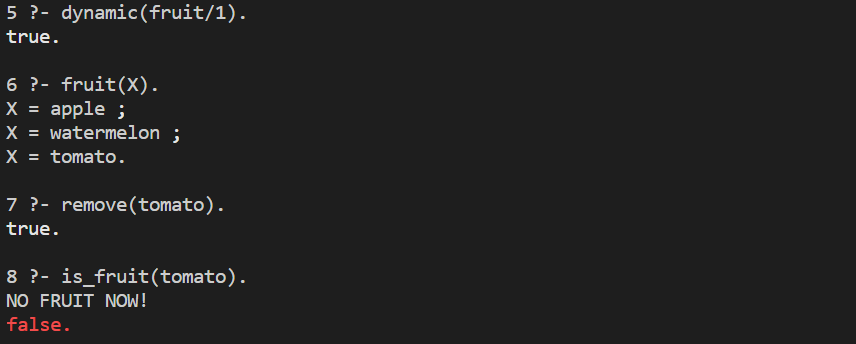





























【推荐】国内首个AI IDE,深度理解中文开发场景,立即下载体验Trae
【推荐】编程新体验,更懂你的AI,立即体验豆包MarsCode编程助手
【推荐】抖音旗下AI助手豆包,你的智能百科全书,全免费不限次数
【推荐】轻量又高性能的 SSH 工具 IShell:AI 加持,快人一步
· 终于写完轮子一部分:tcp代理 了,记录一下
· 震惊!C++程序真的从main开始吗?99%的程序员都答错了
· 别再用vector<bool>了!Google高级工程师:这可能是STL最大的设计失误
· 单元测试从入门到精通
· 【硬核科普】Trae如何「偷看」你的代码?零基础破解AI编程运行原理